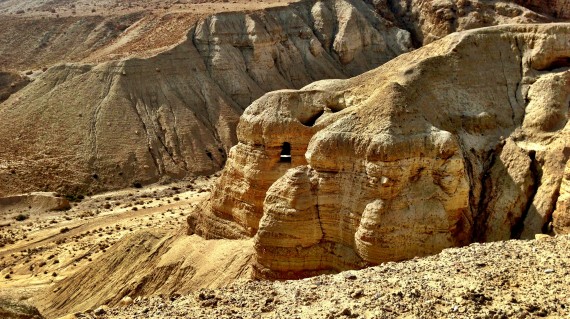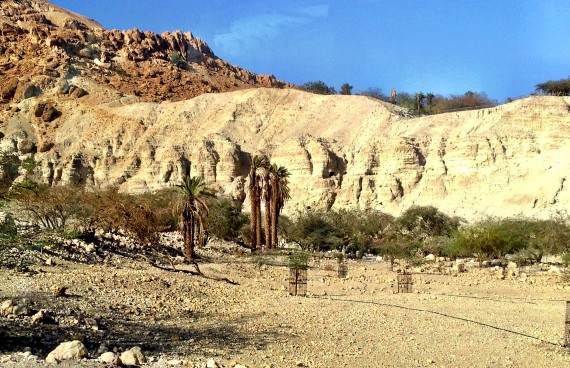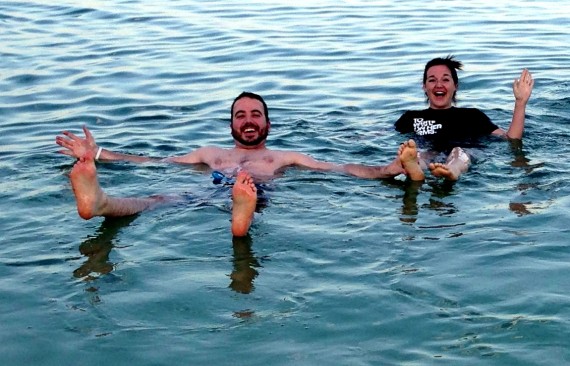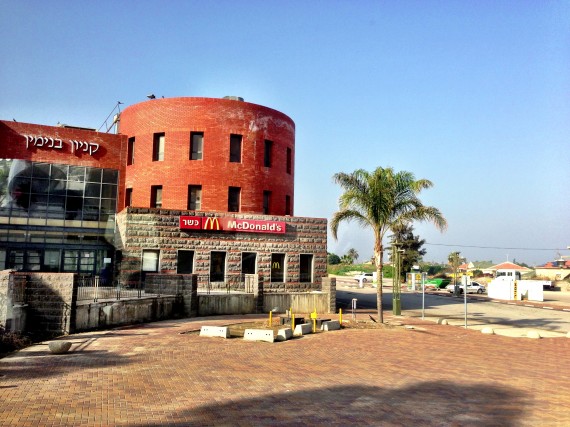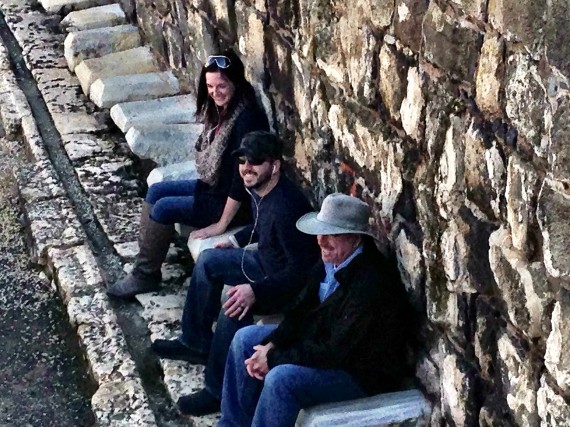Israel (Day 4)
We began today with a very cool experience on the Jordan river. This is the river where Jesus was baptized Himself. We had a handful of people from our group go in and be immersed in the very frigid waters.
Then Jesus came from Galilee to the Jordan to be baptized by John. But John tried to deter him, saying, “I need to be baptized by you, and do you come to me?†Jesus replied, “Let it be so now; it is proper for us to do this to fulfill all righteousness.†Then John consented. As soon as Jesus was baptized, he went up out of the water. At that moment heaven was opened, and he saw the Spirit of God descending like a dove and alighting on him. And a voice from heaven said, “This is my Son, whom I love; with him I am well pleased.†(Matthew 3:13-17)Click here to watch one of the baptisms Our next stop was a place called Bet-She’an. This was an incredible sight for Greek and Roman excavations. This was also the site where Saul’s body was displayed after he was killed by the Philistines. Saul was the first king of Israel and the man that king David (who would later succeed him) often had conflicts with. The green hill on the left of the picture below shows where the wall had been where this happened.
The next day, when the Philistines came to strip the dead, they found Saul and his three sons fallen on Mount Gilboa. They cut off his head and stripped off his armor, and they sent messengers throughout the land of the Philistines to proclaim the news in the temple of their idols and among their people. They put his armor in the temple of the Ashtoreths and fastened his body to the wall of Beth Shan. When the people of Jabesh Gilead heard what the Philistines had done to Saul, all their valiant men marched through the night to Beth Shan. They took down the bodies of Saul and his sons from the wall of Beth Shan and went to Jabesh, where they burned them. Then they took their bones and buried them under a tamarisk tree at Jabesh, and they fasted seven days. (1 Samuel 31:8-13)In this city we also stopped to spend some time in a theater that is extremely well preserved. Here is a picture looking at the seats (featuring all of our group sitting throughout) and another shot taken from the top of the seats looking down onto the stage. We also had a special treat in that one of Central’s worship leaders, Jaime Geideman, went out of her comfort zone and sang a worship song for us onstage! It was a truly incredible moment and I captured a video for you to experience it at home (not even close to the real thing but the best I can give you). Click here to listen to Jaime’s song After this site we made a longer trek out into the wilderness of Israel. Here we visited around the Dead Sea and saw where they found many of the Dead Sea scrolls. This is a fascinating bit of history if you aren’t familiar with yet. Basically, it is the earliest Bible that still exists today. It was the greatest discovery EVER to add authenticity to the Bible. We can compare this ancient version with our modern version and see how much they align together. For example, they found thousands of them in the cave pictured below. In the wilderness there were a few other things that happened of significance as well. When David had to hide from King Saul he hid in the desert of En Gedi. This is right around the Dead Sea and this also is known for being an area of goats. What was pretty incredible is that we also saw a ton of goats while we were in this area.
After Saul returned from pursuing the Philistines, he was told, “David is in the Desert of En Gedi.†So Saul took three thousand able young men from all Israel and set out to look for David and his men near the Crags of the Wild Goats. He came to the sheep pens along the way; a cave was there, and Saul went in to relieve himself. David and his men were far back in the cave. The men said, “This is the day the Lord spoke of when he said to you, ‘I will give your enemy into your hands for you to deal with as you wish.’†Then David crept up unnoticed and cut off a corner of Saul’s robe. Afterward, David was conscience-stricken for having cut off a corner of his robe. He said to his men, “The Lord forbid that I should do such a thing to my master, the Lord’s anointed, or lay my hand on him; for he is the anointed of the Lord.†With these words David sharply rebuked his men and did not allow them to attack Saul. And Saul left the cave and went his way. (1 Samuel 24:1-7)Another remarkable part of this desert for me was seeing the mountain range where Moses was standing when he looked into the promised land. If you remember, Moses led the Israelites out of Egypt but wasn’t allowed to be the one to lead them into the promised land. Joshua would be the guy to do that. If you look straight into the picture below you can see the mountain where Moses was standing when this happened. His view would have been very similar to this picture (although seen from the other side).
 Then Moses climbed Mount Nebo from the plains of Moab to the top of Pisgah, across from Jericho. There the Lord showed him the whole land—from Gilead to Dan, all of Naphtali, the territory of Ephraim and Manasseh, all the land of Judah as far as the Mediterranean Sea, the Negev and the whole region from the Valley of Jericho, the City of Palms, as far as Zoar. Then the Lord said to him, “This is the land I promised on oath to Abraham, Isaac and Jacob when I said, ‘I will give it to your descendants.’ I have let you see it with your eyes, but you will not cross over into it.†(Deuteronomy 34:1-4)Our day concluded with a once-in-a-lifetime experience: swimming in the Dead Sea. The Dead Sea is named as such because it only has water running into it and has no water running out of it. As a result, it is nearly 34% salt (this is more than ten times the saltiness of the ocean!). Because of how salty the water is you float when you are in it. There aren’t adequate words to describe this bizarre feeling so hopefully this picture will help. Finally, I’ll close with a couple of random but fun pictures from the day. If you have no idea what “kosher” means or why this McDonald’s is significant then click here.
 Click here to read all of my posts from this Israel trip.
Do You Want to Read the Bible Without Falling Behind?
Sign up your email and I’ll send you a PDF to download and use my custom-made reading plan system. There’s no way to fall behind on this system and every day will be different no matter how long you use it!
I’ll send future content directly to your inbox AND you can dive into the Bible like never before.





